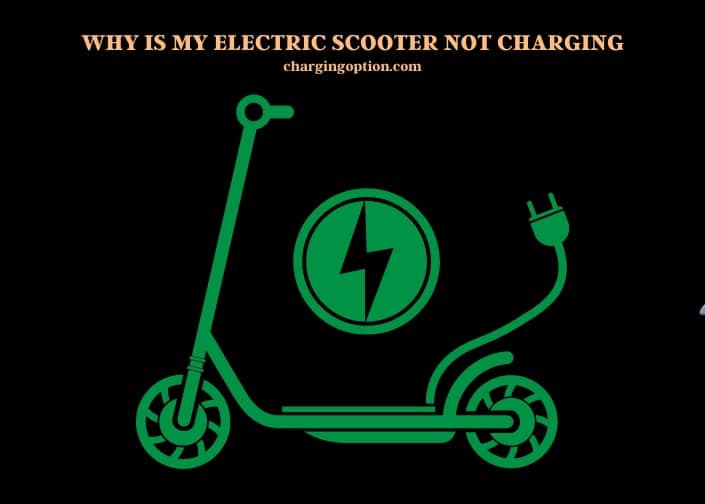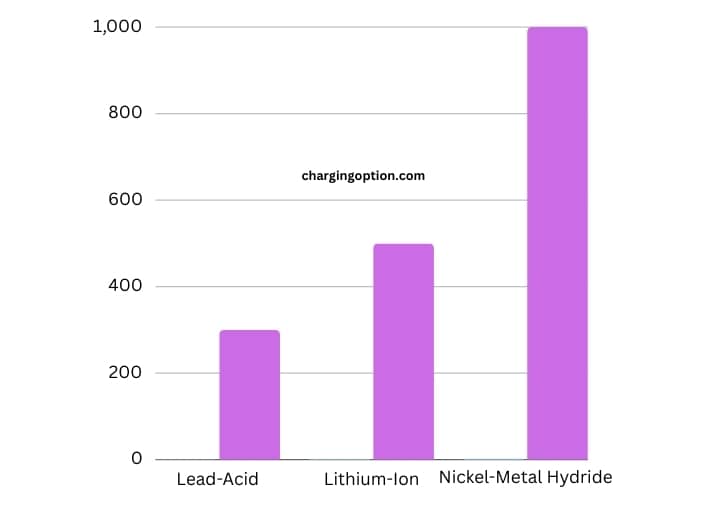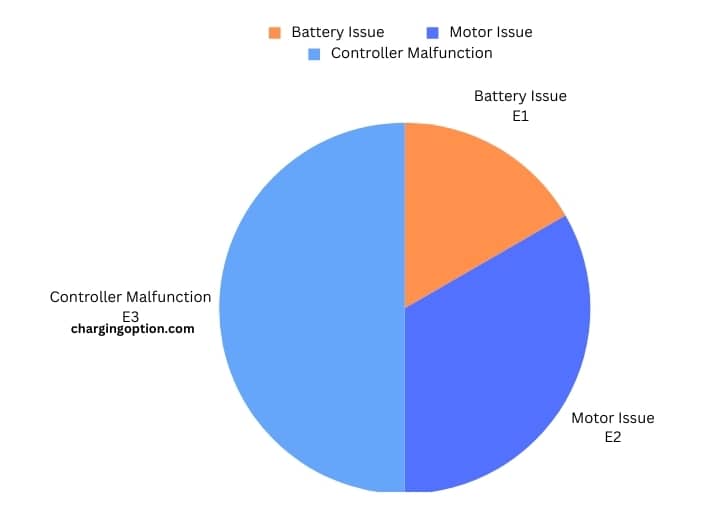Your electric scooter might not be charging due to several reasons. It could be an issue with the battery, charger, or the scooter’s electrical system.
Electric scooters are a popular mode of transportation, offering an eco-friendly and convenient way to travel. However, encountering charging issues can be frustrating. The problem often lies in the battery, which is the heart of the scooter. Over time, batteries can degrade, leading to reduced capacity and failure to hold a charge. Regular maintenance and proper charging habits can extend battery life.
The charger itself can also be a culprit. A faulty charger or damaged cables can prevent your scooter from charging. It’s essential to inspect these components regularly for any signs of wear or damage. Using the correct charger for your model is also vital, as using an incompatible charger can cause harm.

The scooter’s electrical system, including the charging port and internal wiring, can also contribute to charging issues. Loose or corroded connections can interrupt the charging process. Regular inspections can help identify and rectify these issues before they worsen.
In some cases, environmental factors like extreme temperatures can affect charging. Batteries are sensitive to both high and low temperatures, which can impact their ability to charge efficiently.
For more detailed insights and solutions, we invite you to read the comprehensive article below. This guide will help you troubleshoot and resolve charging issues with your electric scooter, ensuring a smooth and reliable ride.
Why is My Electric Scooter Not Charging?
Battery Health and Lifespan
Battery Degradation Over Time
Electric scooters rely heavily on their batteries, and like all batteries, they don’t last forever. Over time, the battery’s ability to hold a charge diminishes. This degradation is a natural process, influenced by factors like the number of charge cycles and how the scooter is used. It’s a bit like how your smartphone battery starts to fade after a couple of years. You’ll notice the scooter not holding a charge as long as it used to, or it might not charge at all.
Average Lifespan of Electric Scooter Batteries
| Battery Type | Average Lifespan (Years) | Charge Cycles |
| Lead-Acid | 1-3 | 300-500 |
| Lithium-Ion | 2-4 | 500-1000 |
| Nickel-Metal Hydride | 3-5 | 1000-2000 |

Signs of Battery Failure
When your scooter’s battery starts to fail, you’ll notice a few telltale signs. The most obvious is a significant drop in the scooter’s range. If you used to scoot around town all day on a single charge and now you’re barely making it to the corner store, it’s a red flag. Also, if the battery takes longer to charge or doesn’t reach full capacity, it’s signaling that it’s time for a check-up or possibly a replacement.
Tips for Extending Battery Life
To keep your scooter’s battery in tip-top shape, regular maintenance is key. Always use the charger provided with your scooter, and avoid overcharging the battery. It’s also a good idea to avoid draining the battery completely before recharging. Think of it as keeping your scooter on a healthy diet and regular exercise routine – it goes a long way in extending its life.
Charger Functionality and Compatibility
Identifying a Faulty Charger
A faulty charger can be the villain behind your scooter’s charging woes. If the charger’s indicator light isn’t coming on or it’s behaving erratically, that’s a clear sign something’s amiss. Also, check for any physical damage like frayed wires or loose connections. Sometimes, the issue is as simple as a broken charger that needs replacing.
Importance of Using the Correct Charger
Using the right charger is as important as using the right fuel for your car. Different scooters have different power needs, and using an incompatible charger can damage your battery or even be dangerous.
Compatibility Chart for Various Electric Scooter Models and Chargers
| Scooter Model | Recommended Charger Type | Voltage |
| Bajaj | EVAPLUS 54.6V 2A Electric Charger | 48V |
| Ather 450X | PowerHOOD Electric Charger | 12V |
| Okinawa Cruiser | KING Electric Charger | 48V |
Electrical System Checks
Inspecting the Charging Port
The charging port is your scooter’s gateway to power. If it’s damaged or obstructed, your scooter won’t charge. Check for any signs of wear, tear, or debris. Sometimes, a simple cleaning can get things back on track.
Troubleshooting Internal Wiring Issues
Wiring issues can be tricky. If you’re comfortable with a screwdriver, you can do a visual inspection for any loose or damaged wires. But remember, safety first! If you’re not sure what you’re doing, it’s best to leave it to the pros.
Common Electrical Failures in Electric Scooters
Electrical failures can range from simple issues like a blown fuse to more complex problems in the scooter’s circuitry. Symptoms include intermittent charging, no response when plugging in the charger, or the scooter turning off unexpectedly. These issues often require professional diagnosis and repair.
Impact of Environmental Factors
Effect of Temperature on Battery Performance
Just like us, electric scooters aren’t fans of extreme weather. High temperatures can lead to overheating and battery damage, while cold temperatures can reduce battery efficiency. It’s best to store and charge your scooter in a temperate, dry environment to keep it running smoothly.
Protecting Your Scooter from Environmental Extremes
To shield your scooter from the elements, store it indoors or in a covered area when not in use. Avoid leaving it in direct sunlight for extended periods or in freezing conditions. Think of it as giving your scooter a cozy home to rest in.
User Errors and Misconceptions
Common Charging Mistakes
One of the most common mistakes is leaving the scooter plugged in for too long. Overcharging can reduce battery life over time. Also, using a non-standard charger or neglecting regular maintenance can lead to charging issues. It’s all about treating your scooter with a bit of care and attention.
Misunderstandings About Electric Scooter Maintenance
Many people think electric scooters are ‘charge and go’ devices that need no maintenance. But like any vehicle, they need regular check-ups. Keeping the tires inflated, the battery healthy, and the electrical components in good working order ensures your scooter is always ready to roll.
Advanced Diagnostics and Professional Help
When to Seek Professional Assistance
If you’ve tried all the basic troubleshooting steps and your scooter still won’t charge, it might be time to call in the experts. Persistent issues or complex electrical problems are best handled by professionals who have the tools and know-how to diagnose and fix the problem safely.
Diagnostic Tools and Techniques
Professionals use a range of diagnostic tools to pinpoint issues. These can include multimeters to test electrical currents and specialized diagnostic software.
Diagnostic Error Codes and Their Meanings
| Error Code | Meaning |
| E1 | Battery Issue |
| E2 | Motor Issue |
| E3 | Controller Malfunction |

Preventative Measures and Best Practices
Regular Maintenance Schedule
Setting up a regular maintenance schedule for your scooter is like having regular check-ups at the doctor. It keeps your scooter healthy and identifies potential issues before they become big problems.
Best Practices for Charging and Storing Your Electric Scooter
Always use the manufacturer’s recommended charger, avoid extreme temperatures, and don’t overcharge the battery. Store your scooter in a dry, cool place, and you’ll extend its life and enjoy many smooth rides.
FAQs
Can Software Glitches Affect Scooter Charging?
Yes, software issues can indeed impact the charging of your electric scooter. Modern electric scooters are equipped with sophisticated software that manages various functions, including battery management. If there’s a glitch or a bug in the system, it might incorrectly read the battery’s charge level or even prevent the scooter from charging. In some cases, a simple reset or firmware update can resolve these issues. If you suspect a software problem, check the manufacturer’s website for updates or contact their customer service for guidance.
Is It Possible for a Scooter’s Age to Affect Charging?
Absolutely, the age of an electric scooter can influence its charging capabilities. As the scooter gets older, its components, including the battery and electrical circuits, undergo wear and tear. Older batteries might not hold a charge as efficiently as they did when new, and aging electrical connections can become less reliable. Regular maintenance becomes increasingly important as your scooter ages. Replacing old batteries and keeping an eye on the electrical system’s health can help maintain its charging efficiency.
Can Overuse of a Scooter Lead to Charging Issues?
Overusing an electric scooter can lead to charging problems. Frequent and intensive use puts more strain on the battery, potentially leading to quicker degradation. This means the battery might lose its ability to hold a charge effectively over time. To mitigate this, try to balance your scooter’s usage with adequate rest periods and ensure you’re following the recommended charging practices. If you’re a heavy user, consider having your battery checked regularly to monitor its health.
Do External Accessories Drain the Scooter’s Battery?
External accessories, like additional lights or a GPS tracker, can drain your electric scooter’s battery more quickly. These accessories draw power from the same battery that powers the scooter, reducing the overall charge available for your rides. It’s important to be mindful of the number and type of accessories you’re using. If you notice a significant drop in your scooter’s range after adding accessories, you might want to reconsider their necessity or opt for more energy-efficient options.
Can Improper Storage Lead to Charging Problems?
Improper storage can indeed lead to charging issues in electric scooters. Storing your scooter in environments that are too cold, too hot, or damp can affect the battery’s performance. Extreme temperatures can cause the battery to degrade faster, while moisture can lead to corrosion in the electrical components. Ideally, store your scooter in a dry, climate-controlled environment. If you’re storing it for an extended period, it’s recommended to charge the battery to about 50% to maintain its health.
Does the Weight Load Affect the Scooter’s Ability to Charge?
While the weight load on the scooter doesn’t directly affect its ability to charge, it does influence battery depletion rates. Heavier loads require more power from the battery to move the scooter, leading to faster battery drain. This means you might find yourself needing to charge the scooter more frequently. It’s important to adhere to the manufacturer’s recommended weight limits not just for safety, but also to ensure optimal battery performance and longevity.
Summary
In this article, we’ve looked at the various reasons why your electric scooter might not be charging. From battery health and charger issues to electrical system checks and environmental factors, we’ve covered the key areas you need to know. We’ve also discussed the importance of regular maintenance and using the right tools and techniques for troubleshooting. By following these tips and best practices, you can ensure your electric scooter stays in top condition and is always ready for your next adventure.
